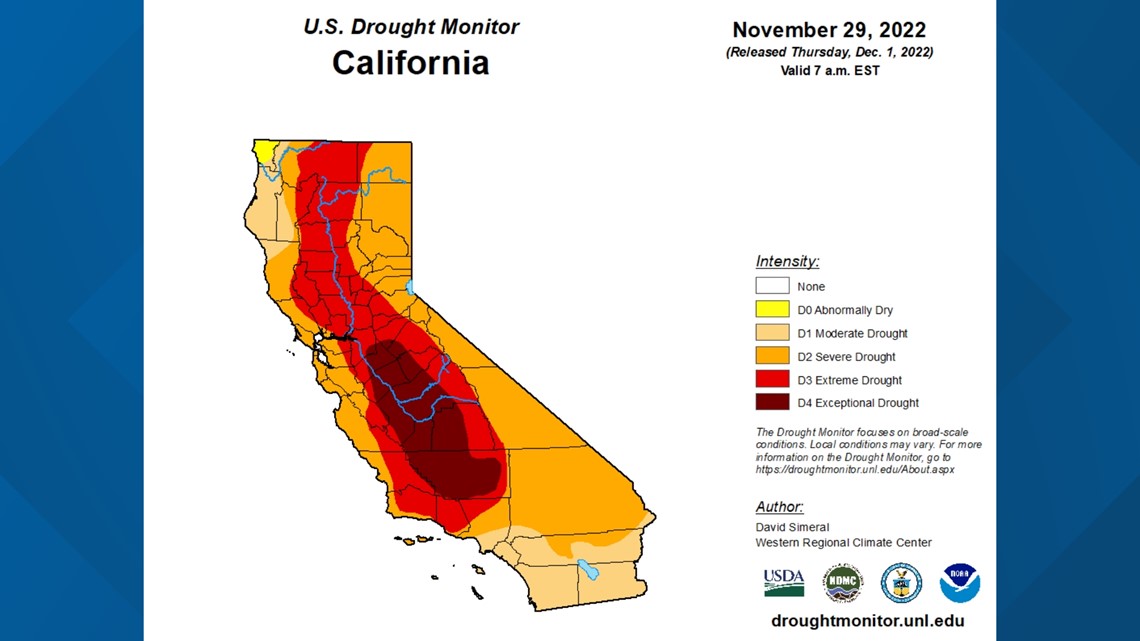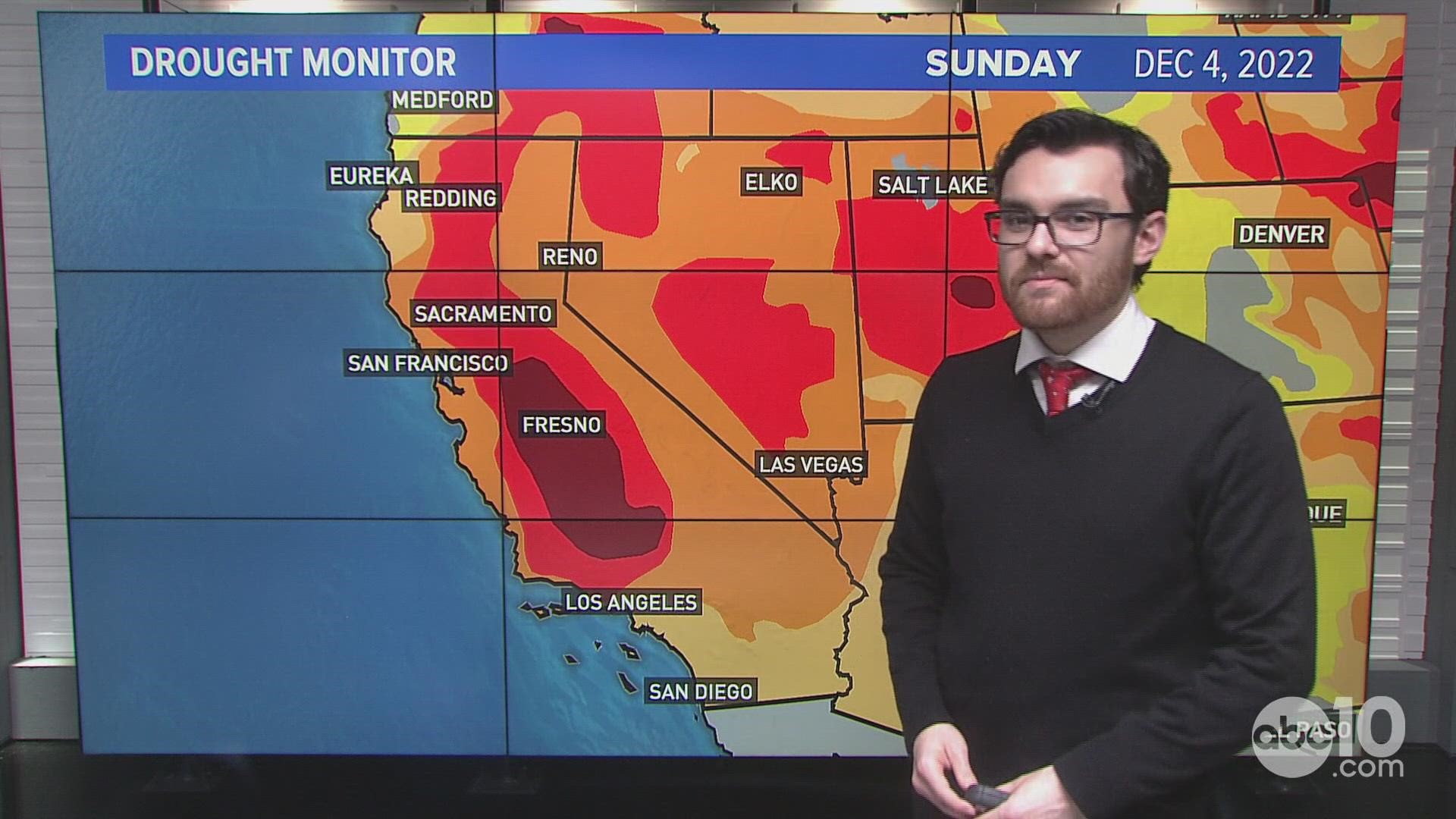SACRAMENTO, Calif. — A series of cold, wet storm systems are drenching Northern California this week after a dry end to November. Impacts from the systems include a few feet of fresh snow, 1-3" of valley rain, and cool temperatures.
The last few weeks have been dry and therefore the drought monitor has remained unchanged. The current storms will likely put the state's snowpack and rain totals above averag for now, but any chances of drought hinge on a nearly continuous stream of moisture this winter.
The San Joaquin Valley continues to be the area most affected by the drought. Compared to last year, California is in better shape but still nowhere near escaping the drought that will likely stretch into at least a fourth year.


The impacts of climate change are prevalent in recent precipitation patterns, from record snowfall in 2017 followed by one of the most severe droughts in California's history.
The impacts of climate change are widespread and one industry that will certainly be affected is California's ski industry.
While warming temperatures are unquestionably a major concern associated with climate change, Mike Reitzell, President of Ski California, pointed to another symptom of a warming climate here in California.
"The number one thing has been variability and volatility, you know, that each season we come into, you really don't know what you're gonna get. I mean, last season being a real perfect example," said Reitzell.
The Sierra Nevada received record snowfall in December, only to be followed by the driest start to a calendar year in California history.
Climate scientists have coined this phenomenon as climate whiplash. California already has a variable climate, but the effects of climate change will only increase the precipitation volatility.
Another impact of climate change is less storms in total, but higher strength when they do strike. Davis Bedient, mountain manager at Donner Ski Ranch, has noticed this change.
"I've lived in Tahoe my entire life, and it is one of those things where the storms have kind of changed a little bit, I think we don't get storms as often as far as intensity goes, it seems like we get a lot of bigger storms," Bedient said.
These factors, along with a shorter snowfall season, means that resorts don't know what to expect year to year.
Most California ski resorts are above the snowline that usually sets up around 5,000-6,000 feet, but as the climate warms, lower elevation resorts could face difficulties with melting snow near the base of the mountain.
Snow-making technology assists many ski resorts in the region but it only goes so far.
"I think that's one that there's definitely concern that down the line, that if we do have those temperatures that rise too much that we're going to have periods where we can't make snow," Reitzell said.
Due to high elevation and snow-making machinery, the ski industry won't disappear as the climate warms, but the task of opening and maintaining slopes and terrain in a warmer, more volatile atmosphere will certainly be more difficult in the future.
WATCH ALSO:

